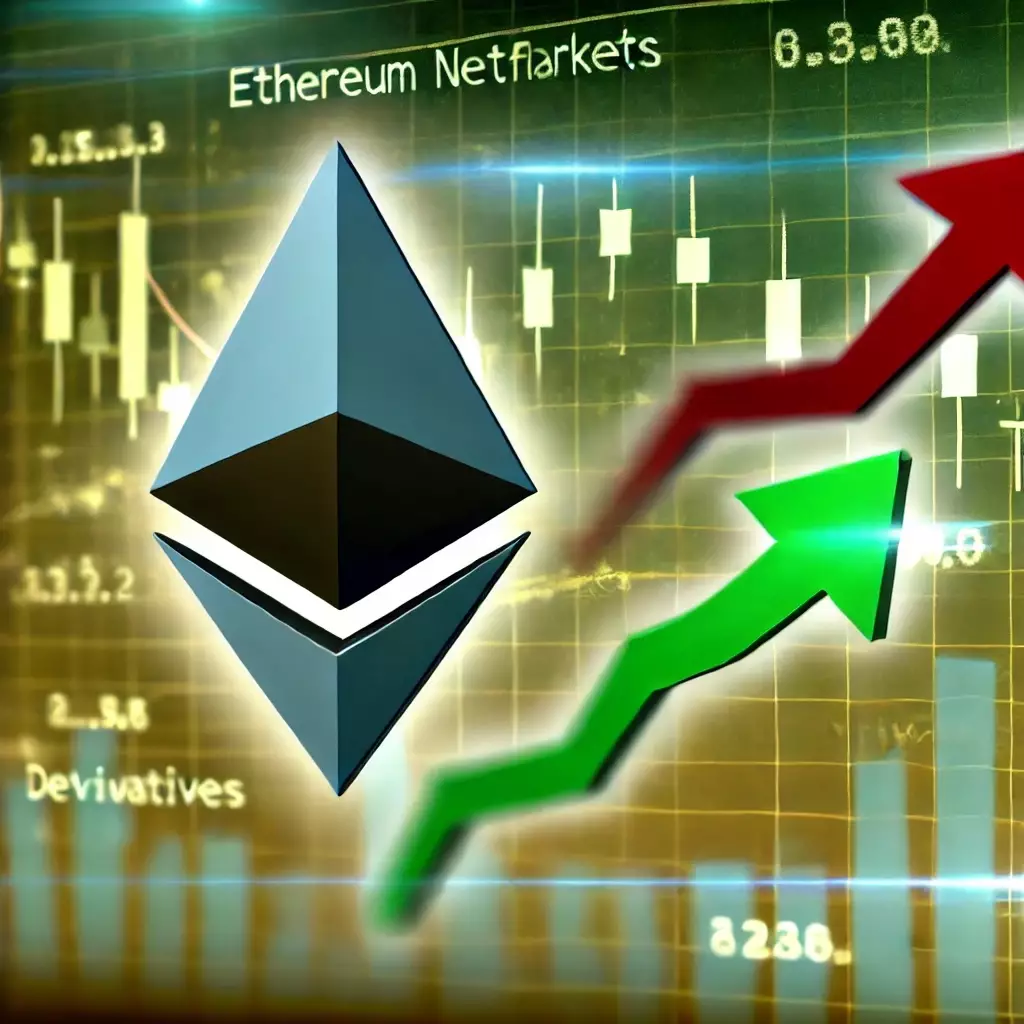Ethereum (ETH) has found itself in a precarious market situation in recent weeks, particularly as it struggles to maintain the $3,000 threshold. The price fluctuations have been minimal, showing small uptrends while still facing substantial resistance. This lack of stability can be detrimental, indicating possible shifts in trader sentiment and overall market dynamics. Analyzing the current state of Ethereum provides insight into the underlying factors that could either trigger a rise or further exacerbate the downward trend.
The last significant rally for Ethereum took place in August, which raised expectations for sustained growth; however, the reality has proven to be less than favorable. Recent analyses and reports, such as those provided by CryptoQuant analyst Amr Taha, highlight intriguing developments within Ethereum’s netflow. Notably, a considerable amount of ETH—approximately 96,000—has recently moved into derivative exchanges, a phenomenon that traders often interpret as a precursor to impending volatility.
Significance of Netflow Changes
The shift in Ethereum’s netflow is more than just an observable metric; it is a telling sign of trader behavior that often precedes periods of significant price movement. As Taha points out, large transactions directed toward derivatives platforms are historically linked to upcoming market volatility, whether positive or negative. Such a significant influx might signal that traders are preparing for a price pivot, indicating a heightened level of risk appetite amongst market participants.
In the context of market behavior, further examination reveals that similar spikes in netflow have taken place prior to notable trends, observed both in May and early July. Such patterns underscore the importance of considering trader positioning as a vital component when forecasting Ethereum’s potential trajectory. Should these inflows result in increased market activity, investors remain cautiously optimistic, weighing the potential for either a bullish breakout or a sharp price correction.
Moreover, Ethereum’s performance does not exist in isolation; it is intricately linked to the larger cryptocurrency ecosystem, particularly Bitcoin. Taha also explored the Bitcoin Futures Sentiment Index to provide additional context for ETH’s current positioning. Higher peaks in this index often suggest growing market enthusiasm; however, historical data reveals that these peaks are typically followed by downward price corrections.
This relationship becomes crucial when evaluating the expected trajectory for Ethereum, especially considering its historical correlation with Bitcoin’s movements. For instance, if the sentiment index indicates a nearing peak of optimism, it could serve as a contrarian signal for both Bitcoin and Ethereum—warning traders to brace for possible volatility and potential price declines.
As it stands, Ethereum remains trapped below the psychologically significant $3,000 mark. Recent corrections have left the asset reflecting a 3.1% decrease within the past week. Despite this decline, Ethereum has shown signs of recovery, inching upwards by approximately 0.9% recently, momentarily flirting with values around $2,700 before settling at around $2,541.
Interestingly, amid these fluctuating prices, Ethereum’s daily trading volume has maintained a level of consistency, ranging from $15 billion to $19 billion without notable spikes or drastic decline over the past week. This steadiness indicates a certain degree of confidence among traders, despite the uncertainty surrounding pricing structures.
The amalgamation of rising netflow into derivatives, correlations with Bitcoin price sentiment, and the tempered trading volume paints a complex picture for Ethereum—one that necessitates strategic consideration on the part of investors. As they navigate these waters, understanding the interplay of these factors could equip them to make informed decisions in an ever-evolving market landscape.
Looking Ahead: A Watchful Stance
The outlook for Ethereum remains uncertain yet hopeful. As traders observe significant events such as the recent spike in netflows and the correlations with Bitcoin sentiment, they must stay alert for potential volatility. Both macroeconomic indicators and market sentiment will undoubtedly influence Ethereum’s next moves. Therefore, stakeholders in this space should remain vigilant and adaptive, embracing a watchful stance as they prepare for the inevitable market shifts that are likely to unfold.


Leave a Reply